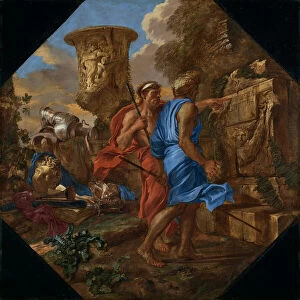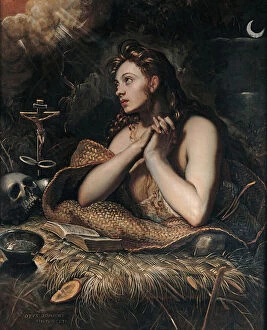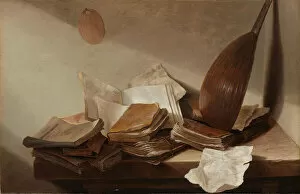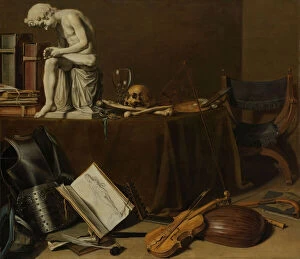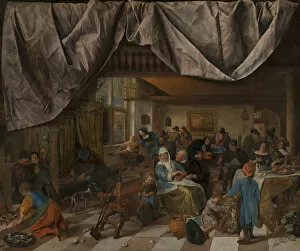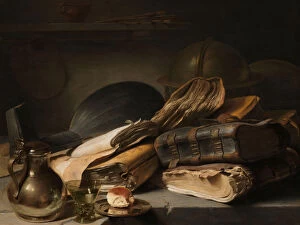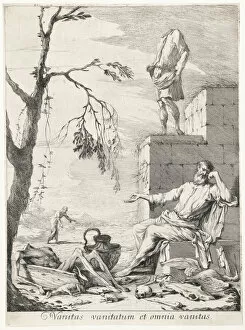Vanitas Vanitatum Collection
"Vanitas Vanitatum
For sale as Licensed Images
Choose your image, Select your licence and Download the media
"Vanitas Vanitatum: A Captivating Journey into the World of Vanity" Step into a realm where art becomes a mirror reflecting the fleeting nature of life and the emptiness of worldly pursuits. "Allegory of Vanity, 1600, " an exquisite oil on wood masterpiece, sets the stage for our exploration. Intriguingly, "Magnificent Still Life with Holbein Bowl, Nautilus and glass cup and fruit bowl, 1678" invites us to ponder over opulence's transience. The juxtaposition of lavish objects against decaying fruits serves as a poignant reminder that material possessions fade away. "The Penitent St. Mary Magdalene, c. 1630-40, " painted on canvas with meticulous detail, captures the essence of repentance amidst vanity's allure. It portrays her transformation from indulgence to spiritual awakening—a powerful testament to redemption. Transporting us further is "Arcadian Shepherds, c. 1655. " This pastoral scene depicts idyllic simplicity while subtly alluding to life's ephemeral nature through symbols like wilting flowers or aging faces—reminders that even in paradise, time waits for no one. Enter Saint Jerome's world in "Saint Jerome, 1646. " His contemplative gaze upon a skull symbolizes mortality and urges introspection—an invitation to reflect upon our own existence amid transient pleasures. "The Penitent Magdalene, c. 1600" evokes empathy as we witness her profound sorrow and contrition depicted on canvas—a striking portrayal capturing both vulnerability and hope within vanitas themes. Books take center stage in "Still Life with Books, " offering intellectual refuge amidst temporal concerns; their presence reminds us that knowledge transcends materiality itself (1625-30). Marvel at "Vanitas Still Life with Spinario, " an oil painting showcasing intricate details alongside symbolic elements such as hourglasses or extinguished candles—all emphasizing the passage of time and life's fragility (1628).





